Abstract
OBJECTIVES: To determine population size, demographic characteristics, hospital utilization patterns, the specialties of physicians providing care, and costs for hospitalized adult sickle cell patients in Illinois. METHODS: A statewide, administrative dataset for the two-year period from january 1992 through December 1993 was analyzed retrospectively. RESULTS: There were 8403 admissions among 1189 individual sickle cell patients for the two-year period. Eighty-five percent of patients resided in the Chicago metropolitan area. The median age of the 1189 patients was 29; two-thirds had Medicaid or Medicare coverage. Emergency departments were the primary source of admissions (85.7%). The most common admitting diagnosis was painful crisis (97.4%), and average length of stay was four days. The median number of admissions per patient was three; most patients (85%) used only one or two hospitals. A small group used more than four hospitals and accounted for 23% of statewide admissions. Primary care physicians cared for most patients, and total hospitalization charges were more than $59 million. CONCLUSIONS: In Illinois the adult sickle cell population is concentrated in major urban centers, primarily the Chicago metropolitan area. These patients accounted for approximately 8400 admissions and more than $59 million in hospital charges during the two-year study period. A small group of patients used multiple hospitals and accounted for more than 23% of total hospitalization charges. This study shows the necessity of and provides a useful framework for developing targeted programs for adult sickle cell patients as well as for training physicians to efficiently provide comprehensive health care services for this population.
Full text
PDF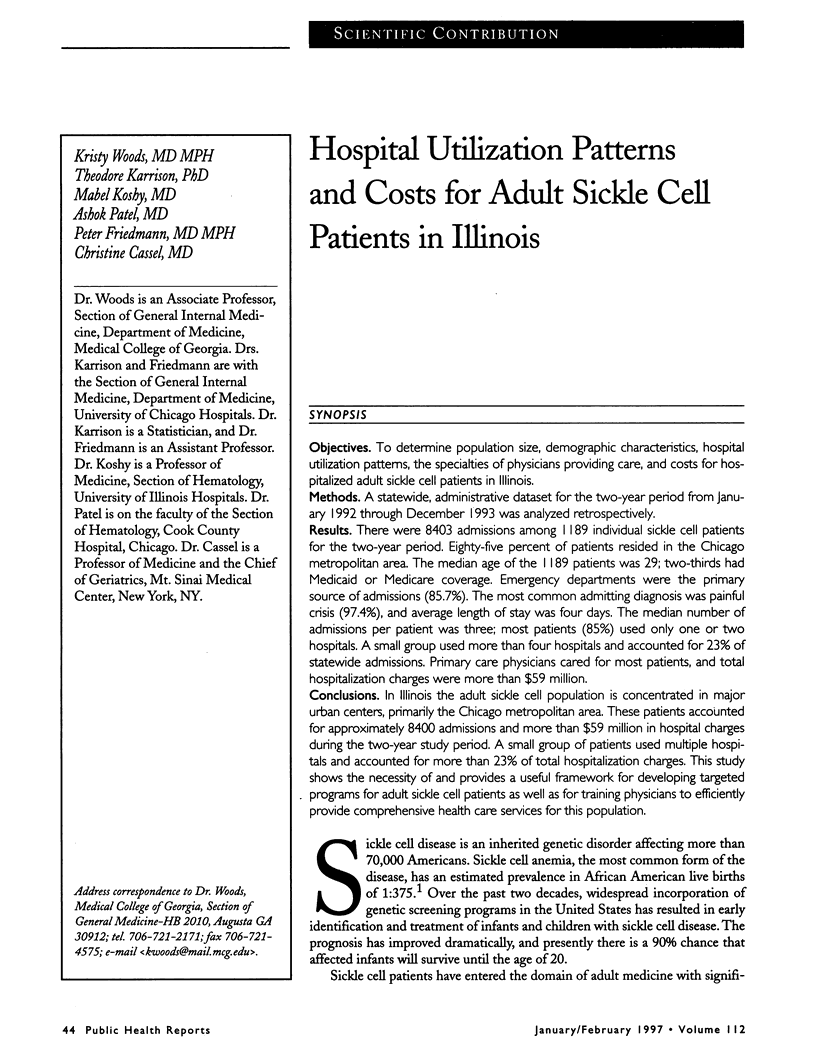
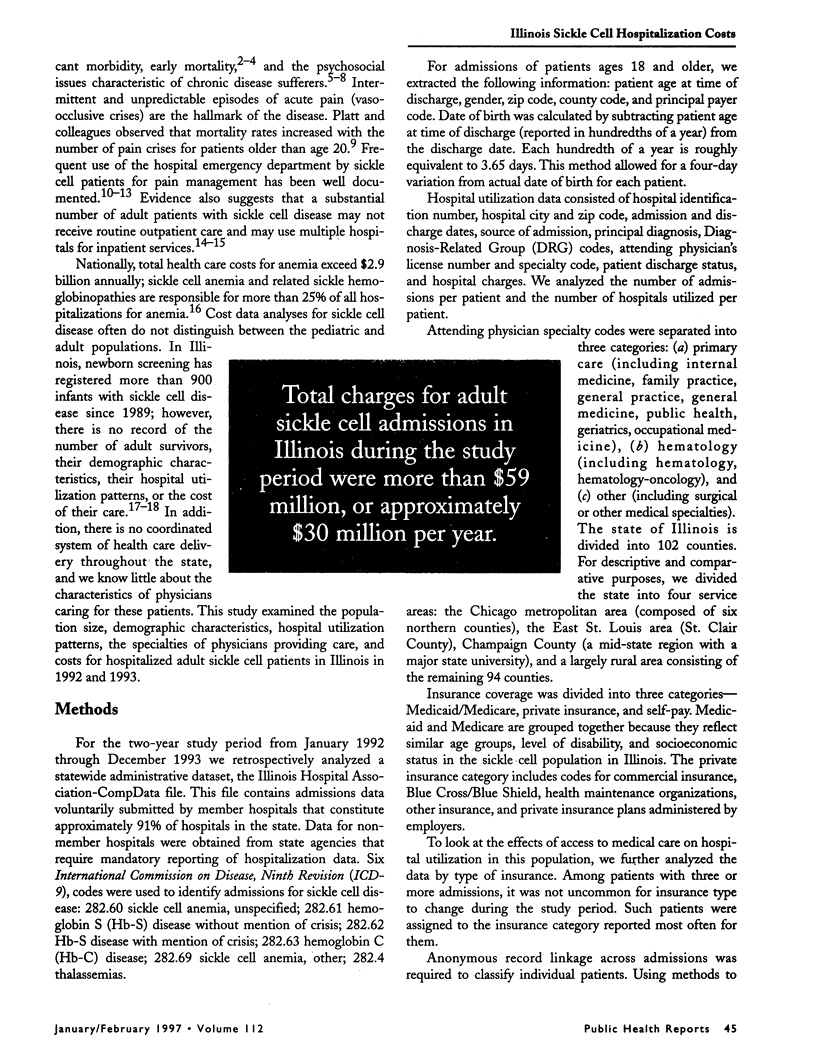
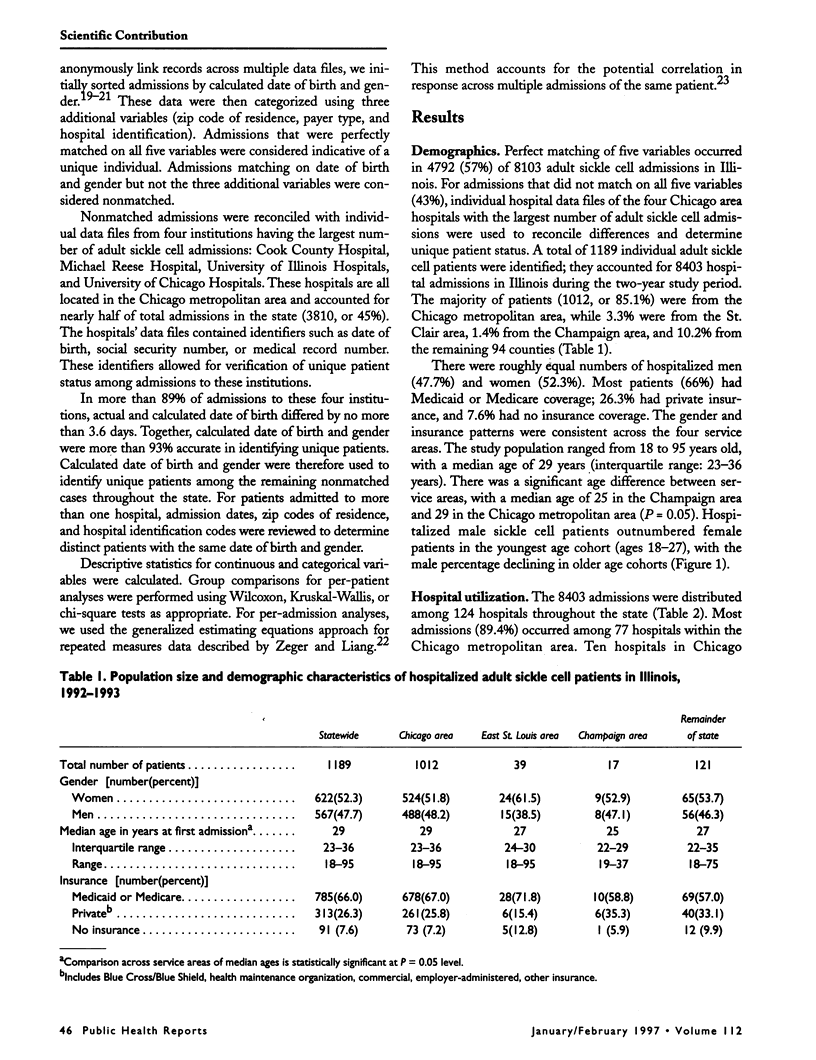
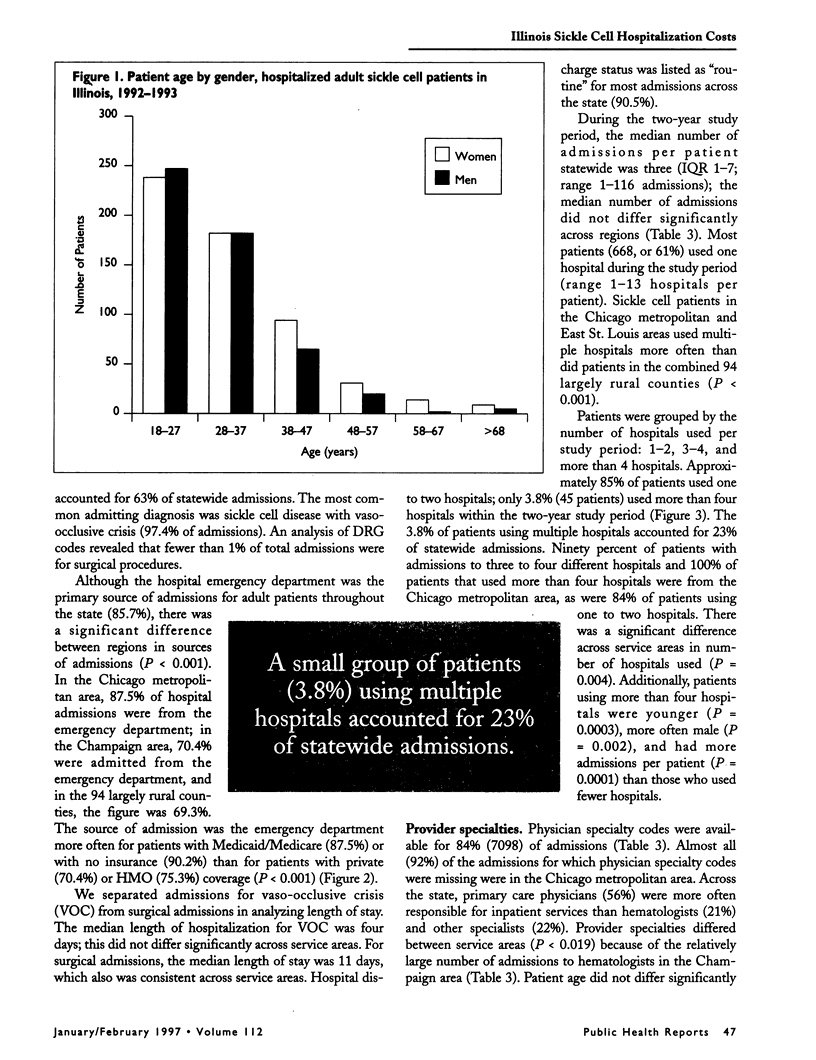
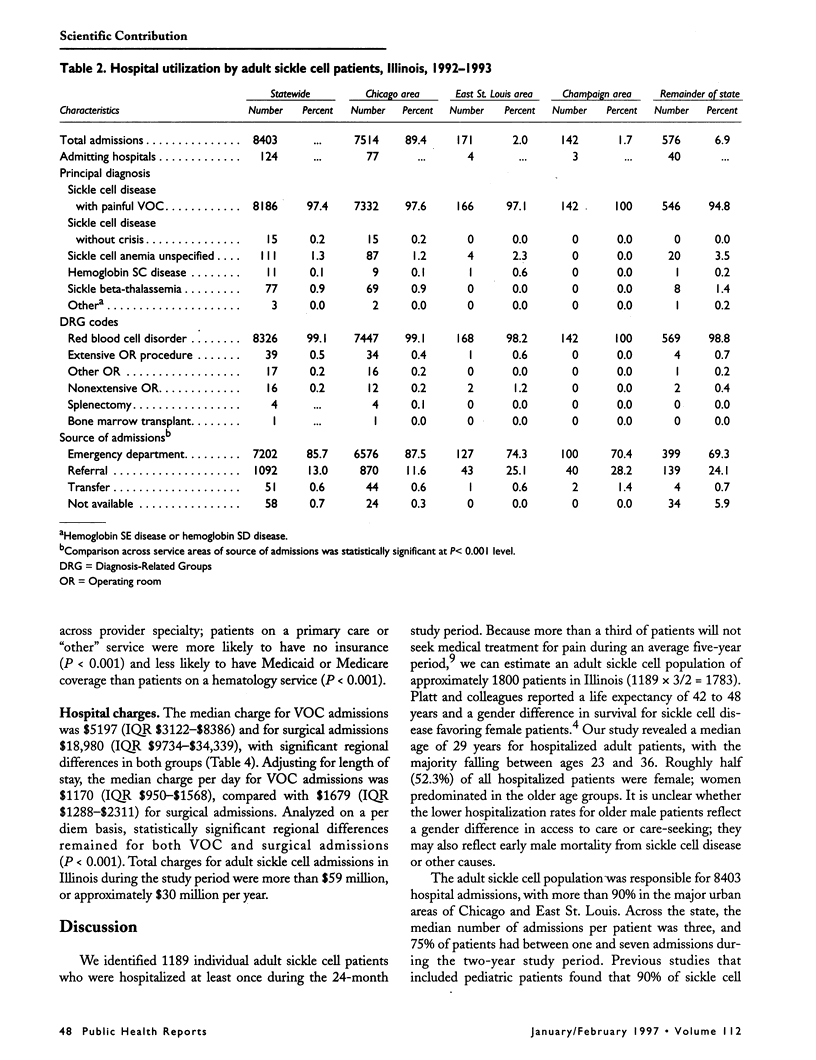
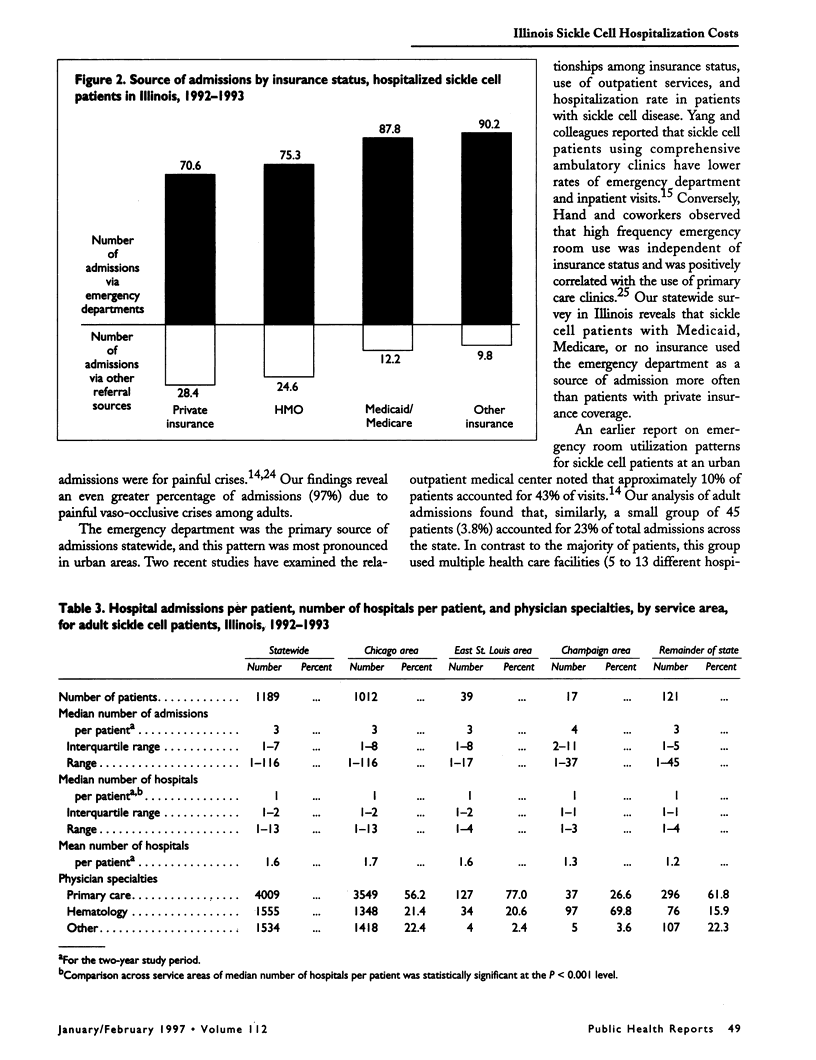
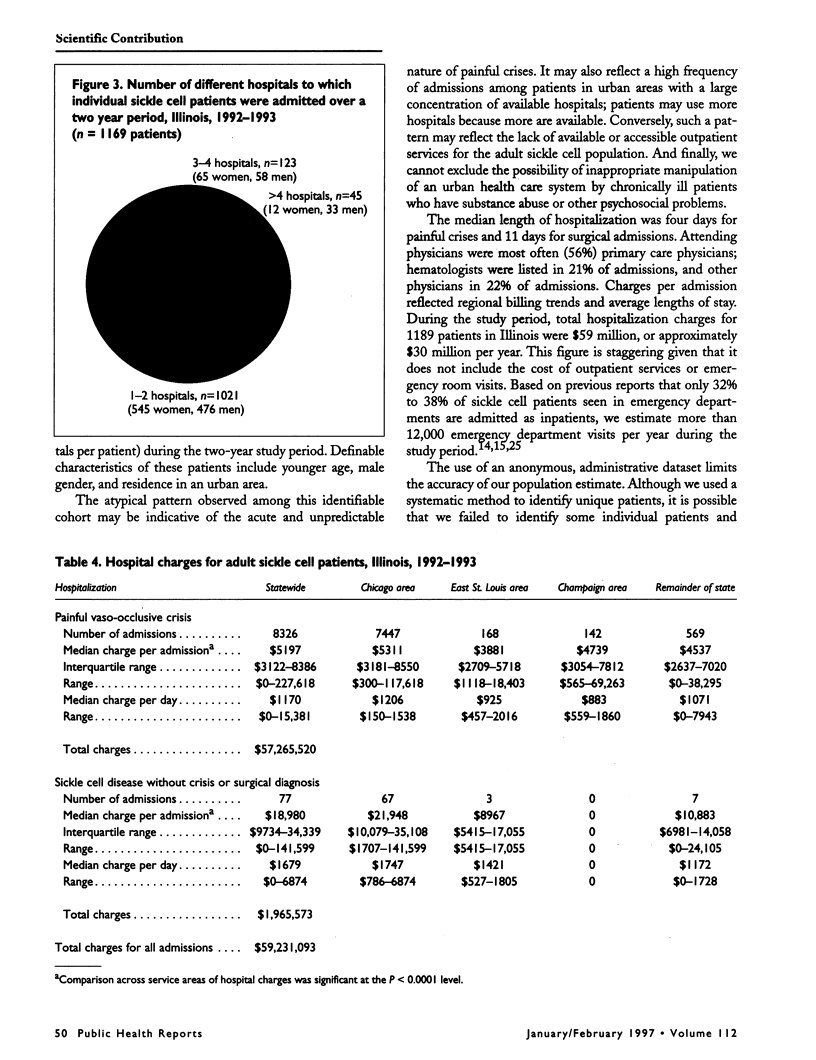
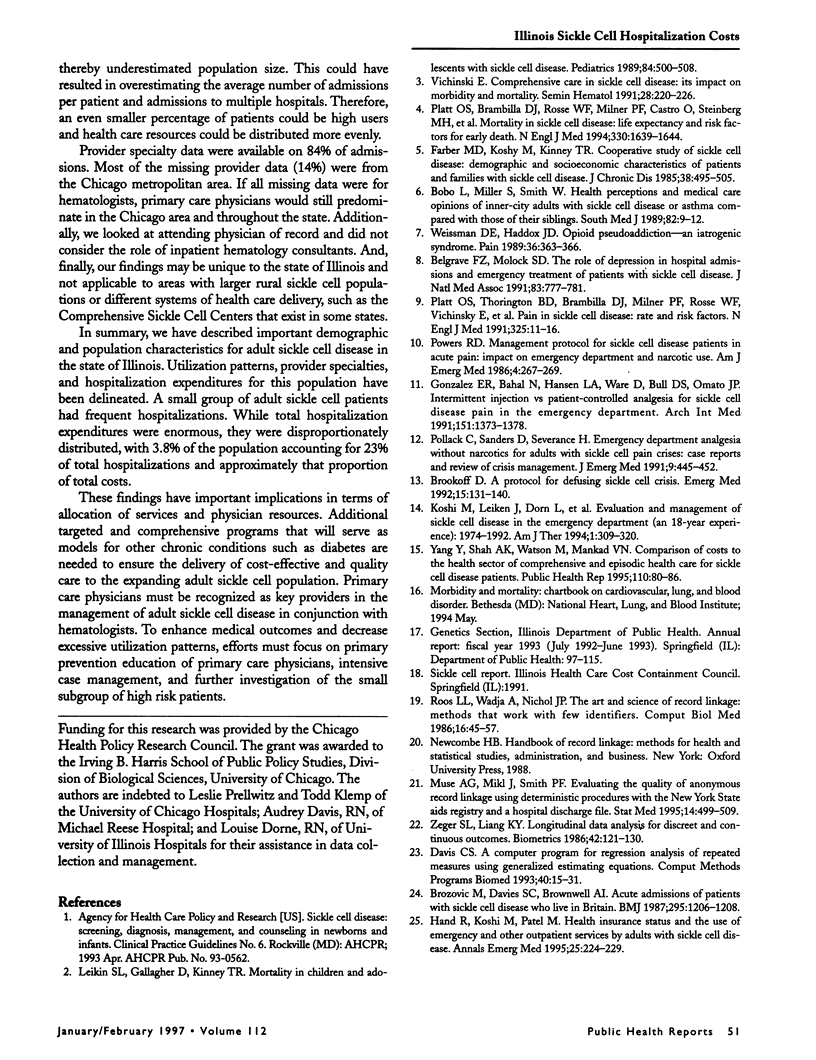
Selected References
These references are in PubMed. This may not be the complete list of references from this article.
- Belgrave F. Z., Molock S. D. The role of depression in hospital admissions and emergency treatment of patients with sickle cell disease. J Natl Med Assoc. 1991 Sep;83(9):777–781. [PMC free article] [PubMed] [Google Scholar]
- Bobo L., Miller S. T., Smith W. R., Elam J. T., Rosmarin P. C., Lancaster D. J. Health perceptions and medical care opinions of inner-city adults with sickle cell disease or asthma compared with those of their siblings. South Med J. 1989 Jan;82(1):9–12. doi: 10.1097/00007611-198901000-00004. [DOI] [PubMed] [Google Scholar]
- Brozović M., Davies S. C., Brownell A. I. Acute admissions of patients with sickle cell disease who live in Britain. Br Med J (Clin Res Ed) 1987 May 9;294(6581):1206–1208. doi: 10.1136/bmj.294.6581.1206. [DOI] [PMC free article] [PubMed] [Google Scholar]
- Davis C. S. A computer program for regression analysis of repeated measures using generalized estimating equations. Comput Methods Programs Biomed. 1993 May;40(1):15–31. doi: 10.1016/0169-2607(93)90046-n. [DOI] [PubMed] [Google Scholar]
- Farber M. D., Koshy M., Kinney T. R. Cooperative Study of Sickle Cell Disease: Demographic and socioeconomic characteristics of patients and families with sickle cell disease. J Chronic Dis. 1985;38(6):495–505. doi: 10.1016/0021-9681(85)90033-5. [DOI] [PubMed] [Google Scholar]
- Gonzalez E. R., Bahal N., Hansen L. A., Ware D., Bull D. S., Ornato J. P., Lehman M. E. Intermittent injection vs patient-controlled analgesia for sickle cell crisis pain. Comparison in patients in the emergency department. Arch Intern Med. 1991 Jul;151(7):1373–1378. [PubMed] [Google Scholar]
- Hand R., Koshy M., Dorn L., Patel M. Health insurance status and the use of emergency and other outpatient services by adults with sickle cell disease. Ann Emerg Med. 1995 Feb;25(2):224–229. doi: 10.1016/s0196-0644(95)70328-4. [DOI] [PubMed] [Google Scholar]
- Koshy Mabel, Leikin Jerrold, Dorn Louise, Lebby Thomas, Talischy Nasrin, Telfert Margaret C. Evaluation and Management of Sickle Cell Disease in the Emergency Department (An 18-year Experience): 1974--1992. Am J Ther. 1994 Dec;1(4):309–320. doi: 10.1097/00045391-199412000-00011. [DOI] [PubMed] [Google Scholar]
- Leikin S. L., Gallagher D., Kinney T. R., Sloane D., Klug P., Rida W. Mortality in children and adolescents with sickle cell disease. Cooperative Study of Sickle Cell Disease. Pediatrics. 1989 Sep;84(3):500–508. [PubMed] [Google Scholar]
- Muse A. G., Mikl J., Smith P. F. Evaluating the quality of anonymous record linkage using deterministic procedures with the New York State AIDS registry and a hospital discharge file. 1995 Mar 15-Apr 15Stat Med. 14(5-7):499–509. doi: 10.1002/sim.4780140511. [DOI] [PubMed] [Google Scholar]
- Platt O. S., Brambilla D. J., Rosse W. F., Milner P. F., Castro O., Steinberg M. H., Klug P. P. Mortality in sickle cell disease. Life expectancy and risk factors for early death. N Engl J Med. 1994 Jun 9;330(23):1639–1644. doi: 10.1056/NEJM199406093302303. [DOI] [PubMed] [Google Scholar]
- Platt O. S., Thorington B. D., Brambilla D. J., Milner P. F., Rosse W. F., Vichinsky E., Kinney T. R. Pain in sickle cell disease. Rates and risk factors. N Engl J Med. 1991 Jul 4;325(1):11–16. doi: 10.1056/NEJM199107043250103. [DOI] [PubMed] [Google Scholar]
- Pollack C. V., Jr, Sanders D. Y., Severance H. W., Jr Emergency department analgesia without narcotics for adults with acute sickle cell pain crisis: case reports and review of crisis management. J Emerg Med. 1991 Nov-Dec;9(6):445–452. doi: 10.1016/0736-4679(91)90216-3. [DOI] [PubMed] [Google Scholar]
- Powers R. D. Management protocol for sickle-cell disease patients with acute pain: impact on emergency department and narcotic use. Am J Emerg Med. 1986 May;4(3):267–268. doi: 10.1016/0735-6757(86)90083-5. [DOI] [PubMed] [Google Scholar]
- Roos L. L., Jr, Wajda A., Nicol J. P. The art and science of record linkage: methods that work with few identifiers. Comput Biol Med. 1986;16(1):45–57. doi: 10.1016/0010-4825(86)90061-2. [DOI] [PubMed] [Google Scholar]
- Vichinsky E. P. Comprehensive care in sickle cell disease: its impact on morbidity and mortality. Semin Hematol. 1991 Jul;28(3):220–226. [PubMed] [Google Scholar]
- Weissman D. E., Haddox J. D. Opioid pseudoaddiction--an iatrogenic syndrome. Pain. 1989 Mar;36(3):363–366. doi: 10.1016/0304-3959(89)90097-3. [DOI] [PubMed] [Google Scholar]
- Yang Y. M., Shah A. K., Watson M., Mankad V. N. Comparison of costs to the health sector of comprehensive and episodic health care for sickle cell disease patients. Public Health Rep. 1995 Jan-Feb;110(1):80–86. [PMC free article] [PubMed] [Google Scholar]
- Zeger S. L., Liang K. Y. Longitudinal data analysis for discrete and continuous outcomes. Biometrics. 1986 Mar;42(1):121–130. [PubMed] [Google Scholar]


